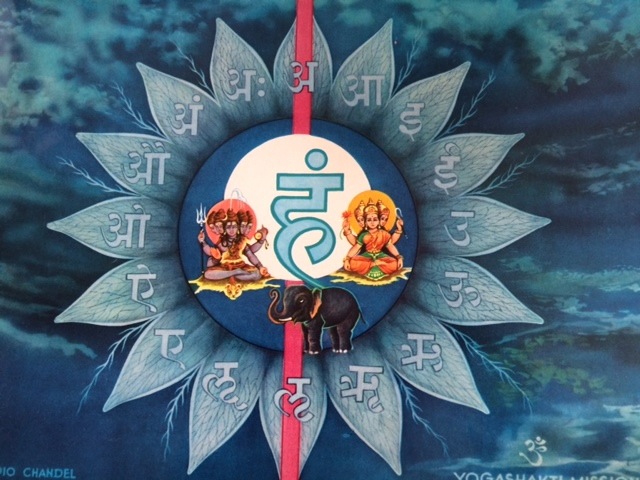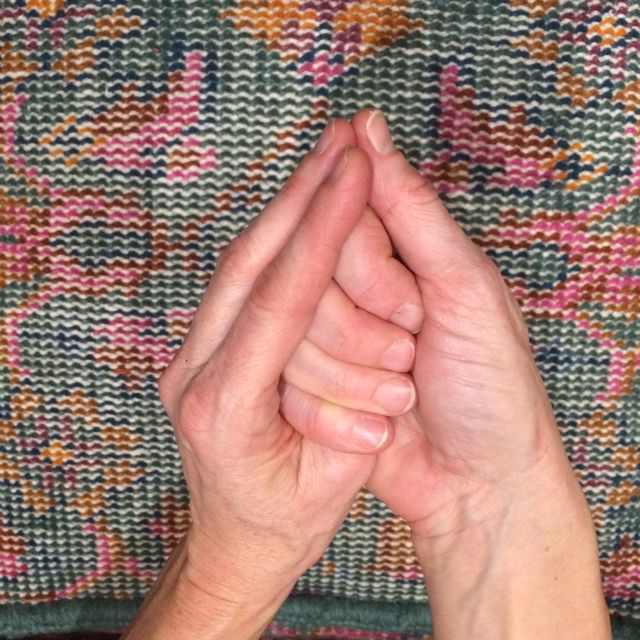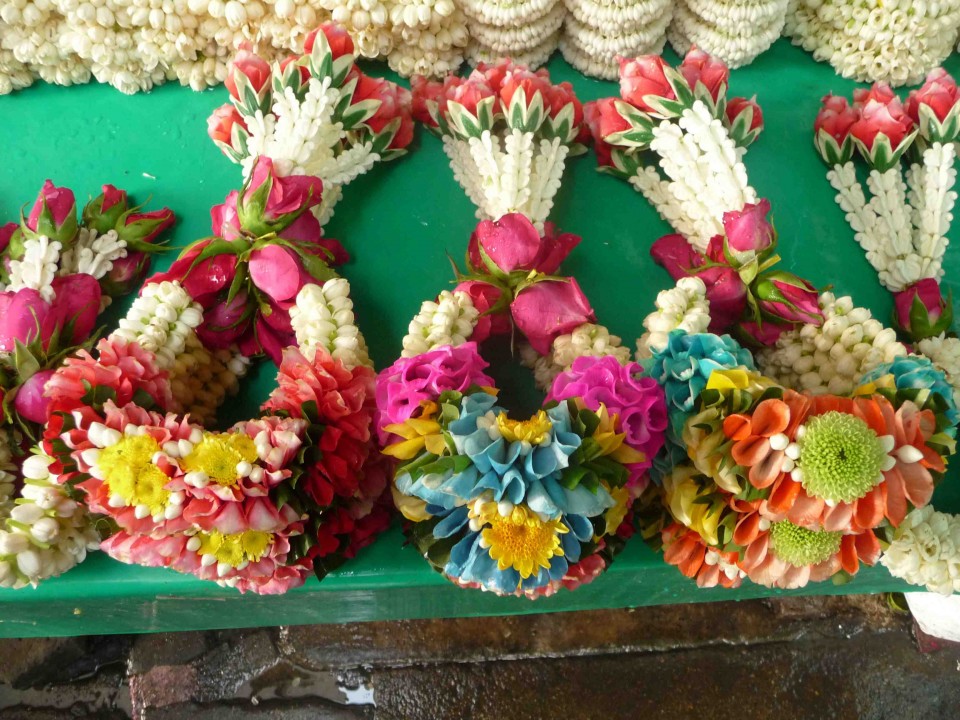SEASONAL SELF-CARE BLOG
Fifth chakra – Visuddha – throat chakra
Posted on February 1st, 2016
Speak your truth and let your creativity flow freely! Enjoy these practices to open Visuddha Chakra, your throat chakra. Join us on instagram @yoga_sukhavati for our #chakraSeries#Thurs and get some tips for opening your chakras every Thursday!
With our fifth chakra, we shift from the physical plane of the lower chakras to the more subtle spiritual realms of upper three chakras. Located in the throat, Visuddha chakra, meaning purification, is associated with the elements ether and controls the principle of sound. It governs speech, communication, and creativity through the vibrational resonance of our voice. Our self-expression is the pathway for our interior world to make itself known in the outside world. The throat is also the internal portal between our mind and body. When our fifth chakra is blocked our creative expression and voice are impaired. We may not speak up for ourselves, be shy, withdrawn,, mutter, stutter, whisper or have a tight voice. If excessive, we may monopolize conversations, speak too loudly or have a shrill voice. When our throat chakra is healthy there is an easy balance in conversation between listening and talking. The voice is resonant, clear, and authentic. We easefully express ourselves and our creativity flows.
The fifth chakra is blue with 16 petals on which are inscribed the 16 Sanskrit vowels. In the center of the lotus is Ham, the bija mantra or seed syllable for Visuddha chakra. Chanting Ham as well as the sanskrit vowels is very healing and opening for the related organs as well as emotional and mental aspects of Visuddha. Singing and mantra practice are wonderful ways to heal imbalances in Visuddha chakra.
ETHER ELEMENT
Vibrational Purification
This photo was taken on my Retreat in Norway at Tomrefjord. Every evening as we sat down for dinner, an exquisite elemental dance of light arose in the vastness of space of the fjord. We were in awe and I had the distinct feeling of being in the presence of the divine.
The throat chakra, Visuddha chakra, means “Purification”. It is the portal to our spiritual dimension. As we purify the toxins from our physical, mental, and emotional bodies through our yoga, meditation, and chanting practices, we also cleanse our subtle body. The element of the throat chakra is ether, or “Akasha”, derived from the sanskrit root “kāś” meaning “to be visible”. Translated as space, sky, atmosphere, Akasha, or ether, is the element in which visibility occurs. The first element created, akasha is the essence from which the other elements arise in the material world. Ether governs sound. Sonic vibrations create a deep cleansing of the etheric body. As such chanting, mantra practice, and singing are very potent means of purification and spiritual awakening.
MATSYASANA (Fish pose)
lotus variation
Do you find it difficult to express your thoughts and feelings? Are you afraid to speak your truth? Do you find that you silence yourself often, wishing you could speak up, but remain mute? Do you have creative impulses that lie dormant? If yes, your throat chakra may be blocked.
The throat chakra governs the free flow of honest communication and creative self-expression. I have found that shoulderstand (sarvangasana) and fish pose (matsyasana) are the most effective asanas to open up the throat chakra. Consistent practice of these poses will help you clear your voice and open the pathway to easeful communication and creativity. Prep for these poses with a healthy dose of shoulder openers to warm up your neck and shoulders. I always include plenty of shoulder openers in my classes, as my students will attest! This picture was taken awhile ago, when I was living in Oakland, California. I have always loved it.
SHANKH MUDRA (Shell Mudra)
Open your voice, clear the pathway to easeful and honest communication, heal throat issues, and unleash your creative self expression.
- Sit comfortably
- Wrap your left thumb with the fingers of your right hand
- Place your right thumb on the middle finger of your left hand
- Hold the mudra in front of your chest
- Chant “Om” several times
- Listen afterwards, letting the echo of the chant reverberate through your being
- Rest in silence
- Enjoy the peacefulness and sense of calm that Shankh mudra awakens inside
Affirmation: I easily express myself and my creativity flows freely!

joyous heart!
Leigh
Q & A with Jo Brill
Posted on September 2nd, 2015
We are delighted to present the Introduction to Sanskrit, with Jo Brill Sept 12, 13 through our Yoga Sukhavati: Art of Sound Module. Jo is a gifted and generous teacher and we are very excited to share her with you! We talked to Jo about her love of Sanskrit, how it enhances the teaching of yoga, and the many wonderful people she has met on her journey.
Where are you from originally? How long have you lived in NYC?
I was born upstate, in Troy, but grew up “in the middle” — Arkansas, Kansas, Missouri, Iowa. I’ve lived in New York State since 1980 when I started grad school, the first time, and I’ve lived in Peekskill (commuting distance!) since 1987.
How did you find yoga?
I started taking yoga after my first baby. Lucked into a wonderful teacher, Mia Azcue, the very first class and I have been her student since then!
How long have you practiced yoga? How long have you been teaching yoga?
I started practicing in 1988 or so — but casually. I got much more interested after a mid-life crisis in my 40s (I schedule one each decade!) and that’s when I sought out training, with Fran Ubertini, and began to teach — in 2004. Fran gave us several assignments to reflect on various yoga sutras, and I got frustrated with the variances in translation and interpretation! That’s what led me to Sanskrit.
How do you know Leigh?
I met Leigh when she signed up for a one-week intro intensive. That class was full of bright and loving people!! Of course Leigh was a ringleader!
Who is your sanskrit teacher?
I’ve studied with many wonderful teachers. My first teacher, Vyaas Houston, gave me invaluable tools for learning and focus — and his love of the Sanskrit theory of grammar proved contagious! I have had amazing opportunities to study with marvelous teachers at the University of Chicago, Oxford, Columbia, and Penn — some of the finest Sanskritists in the world. I must also mention Prof. Ramkaran Sharma, with whom I studied seven summers; his sweetness and brilliance as a teacher and a person is unparalleled.
What got you interested in Sanskrit? At what point did you decide you wanted to teach it yourself?
It was not the sound, though that attracts so many people. It was the philosophy. I wanted clarification! And I wanted it straight from the source, not distorted by commentary. Yes, I was a little naive!
Vyaas had us start teaching early. When I started in 2007, I’d been studying for just 18 months, and really didn’t know much! — but I was able to teach the alphabet using his wonderful method.
What is the most rewarding part of learning sanskrit?
Sanskrit continues to teach me about the incredibly complicated texture of human learning and culture. For a while I loved the neatness — you know, like math. Turns out, as with math, when you go far enough, things get less neat! I’m just grateful that somehow I found this language, so elegant and powerful, as well as the astoundingly huge multitude of texts it opens up for the reader.
As a yoga instructor, how does learning sanskrit beyond the names of asanas enhance ones teaching?
More and more, I feel that it’s important for westerners, many of us from variously privileged backgrounds, to remember that we are choosing to spend our time with cultural phenomena that are not ours by heritage. For our students’ sake too, it’s important not to be a jerk. Even inadvertently! While we may love the “exotic” for its power to show us truths about ourselves (more clearly perhaps than our own cultural practices do) — we should keep in mind that symbols, and certainly utterances, have religious and political implications we are almost certainly not fully aware of. It’s important to keep firmly in mind that we don’t know everything — on the contrary! Sanskrit has been for me a never-ending onion. Its layers and layers of meaning and significance are truly humbling.
What are you looking forward to most about being a part of Yoga Sukhavati’s Art of Sound module?
I absolutely love teaching this workshop. For one thing, I have met so many lovely people through Sanskrit. So when I walk in and see your faces, and hear your voices, I know that there are warm and precious connections to be made. For another — well, any time you spend hours with these sounds, you will have fun and you will go deep! Last, I know I will learn something. It’s through Sanskrit that I finally learned how grateful teachers are for students. I will love meeting each person!
You just returned from India. Any take-aways from this most recent trip that you would like to share?
It was only my second trip. I’m still processing, but again, I must emphasize the people. Brilliant and caring teachers, a warm and wonderful host family, and awesome fellow students who broadened my mind with their wide range of interests. Such generosity!
What is your favorite activity to do in NYC?
Hmmm, that’s difficult! Theater, maybe? But I also love to eat! Recently my two sons that live in Brooklyn have been showing me some great new restaurants. My third son has also treated me, but you didn’t ask about Boston!
Please add anything else you would like to share!
Until we meet, भद्रं ते !
Sing to your hearts content
Posted on June 16th, 2015
Open up your voice and sing from your heart to infuse your spirit with the joyful abundance of Summer.
I took this picture when I was in Thailand in 2014 studying Thai massage with master teacher, Pichest Boonthumee. My favorite thing to do when traveling in Asia is to get up early and walk through the open air markets. The streets and markets are buzzing with life and vitality. Our first day studying thai massage with Pichet, we were to arrive at 9am with offerings- flowers, incense, and fruit. So I got up early and went to the market. I was mesmorized by the intricate beautiful flower offerings that were on display. People of all walks of life were purchasing them on their way to work. The daily flower art offerings hung everywhere, on the mirror in the rickshaws, on the bow of the boats, in the restaurants, on the spirit houses and temples. Gratitude in the form of these beautiful ephemeral works of flower art were lusciously everywhere. They make me so happy.
As the Summer solstice is here, I share with you the beauty of these flower offerings. Our gardens are blooming and the bounty of the Summer is shining everywhere. According to Chinese Medicine, Summer is the time to nourish the heart and small intestine. When talking about the heart, Chinese medicine includes the physical heart as well as the mind or consciousness of our being. The heart circulates the blood through the body, houses the spirit, and is responsible for maintaining awareness. The heart-mind is said to sprout at the tongue. Speech and song emerge from the heart center as fragrant blossoms emerging from the stem and root. I am reminded of our phrase in English “Sing to your heart’s content”.
People with a balanced heart-mind shine not only through their generous, joyous, loving presence but also through their clarity of speech and thought. They are good communicators, highly articulate and aware. For most of us, unfortunately, our heart-mind’s are scattered and confused. Constant media stimulus and the fragmentation of our modern lives leaves us with frighteningly short attention spans, and a constant stream of agitated, anxious thoughts whirling in our mind. Our thoughts become diffused, disjointed, and our speech confused or rambling. These are signs that our heart-mind is out of balance.
To strengthen the heart-mind and gather your scattered thoughts, sing and explore voice centered practices this Summer. It is the perfect time to delve into the beautiful Indian devotional chanting practices of kirtan, and mantra. Chanting in the sacred language of Sanskrit helps focus your mind and invites forward your innate state of spaciousness, clarity and pure awareness. Chanting is like a vibrational form of flower offerings-strings of sacred sound garlands offered from the heart.
“The word mantra is derived from the words manama (‘thinking’) and trana ( ‘liberation’). In other words, a mantra is a potent form of thought, an instrument of conscious intention.
Georg Feuerstein, “The Yoga Tradition”
‘Because the mantra is an expression of a more evolved consciousness, it offers a unique link with that higher level. For this reason, it not only makes the path to higher consciousness clearer by replacing interfering thoughts, its gradual incorporation pulls consciousness toward that state.’”
Swami Rama, “Yoga & Psychotherapy”
Join us for joyful sonic explorations this Summer through our Art of Sound Module!
Enjoy!
Leigh






